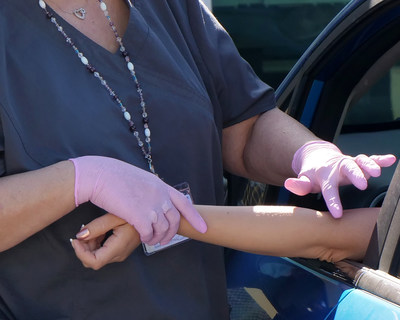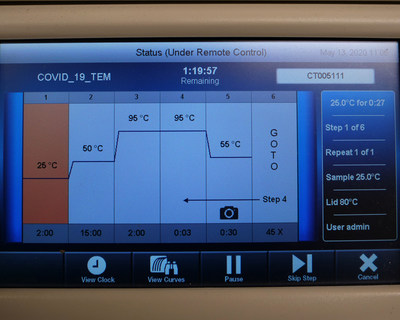SARS-CoV-2 Virus Kinetics Influenced by Viral Strain and Vaccination Status
06 Dec 2022
Clinical Study
Oak Crest Institute of Science, a Southern California Non-profit, Publishes Significant New COVID-19 Vaccination Research – 'Clinical SARS-CoV-2 Kinetic Profiles are Dependent on the Viral Strain and Host Vaccination Status'
MONROVIA, Calif., Dec. 6, 2022 /PRNewswire/ -- The Oak Crest Institute of Science announced the publication of results from a new research project in
Microbiology Spectrum (DOI: 10.1128/spectrum.04469-22). The study followed two vaccinated participants – a male and female – who developed COVID-19 independently between December 27, 2021, and January 3, 2022, the only participants to become infected with SARS-CoV-2 over this period. Using state-of-the-art molecular techniques to analyzed nasal swab samples collected at high frequency longitudinally, researchers sought to explore whether full vaccination affected early COVID-19 replication rates and/or viral loads through the various stages of infection.
Continue Reading

Preview
Source: PRNewswire
Samples were collected in the open air

Preview
Source: PRNewswire
PCR testing
"
Our ultimate conclusion in this study centers on three important points," said researcher, Manjula Gunawardana, M.P.H.
"The SARS-CoV-2 virus doubling times were similar for vaccinated and unvaccinated individuals infected with an earlier SARS-CoV-2 strain.
Vaccinated individuals have a shorter clearance phase than the unvaccinated subjects in an earlier study.
The continuous sampling protocols detected a virus mutation in one of the participants during the time they tested positive."
"Oak Crest already has a distinguished history of research
on viruses," said Paul Webster, Ph.D., and Senior Faculty at Oak Crest. including HIV prevention strategies. "We work on devices for sustained delivery of anti-HIV drugs, and the formulation of new drug candidates for the delivery, prevention, and treatment of infectious diseases. Our team has successfully transferred biomedical research from the bench to early-stage clinical trials, often first-in-human – which is a significant accomplishment for a small academic team. Our HIV clinical trials involve antiviral intravaginal rings and a subdermal implant, currently being evaluated in South Africa in a first-ever human Phase I/II clinical trial."
Gunawardana et al. Clinical SARS-CoV-2 Kinetic Profiles Are Dependent on the Viral Strain and Host Vaccination Status. Microbiol Spectr. 2022 Dec 1:e0446922. doi: 10.1128/spectrum.04469-22. Epub ahead of print. PMID: 36453916.
For the latest Oak Crest biomedical research, student/teacher programs, and other events, follow Oak Crest on social media: Facebook, Twitter, Instagram, LinkedIn, YouTube.
Founded in 1998, Oak Crest Institute of Science is a 501 (c)3 non-profit organization established to conduct innovative research in biology, chemistry, and environmental science while providing an educational platform for teachers and students. Taking an experiential role as educators, Oak Crest gives teachers and students a chance to work on funded, authentic research projects, helping all involved to develop a sense of achievement while also fostering inclusion with the entire STEM community. Learn more at: www.Oak-Crest.org.
Media Contact:
Paul Webster, PhD
1 (626) 817-0883
[email protected]
For more details,please visit the original website
The content of the article does not represent any opinions of Synapse and its affiliated companies. If there is any copyright infringement or error, please contact us, and we will deal with it within 24 hours.
Organizations
Indications
Targets
-Drugs
-Hot reports
Get started for free today!
Accelerate Strategic R&D decision making with Synapse, PatSnap’s AI-powered Connected Innovation Intelligence Platform Built for Life Sciences Professionals.
Start your data trial now!
Synapse data is also accessible to external entities via APIs or data packages. Leverages most recent intelligence information, enabling fullest potential.




